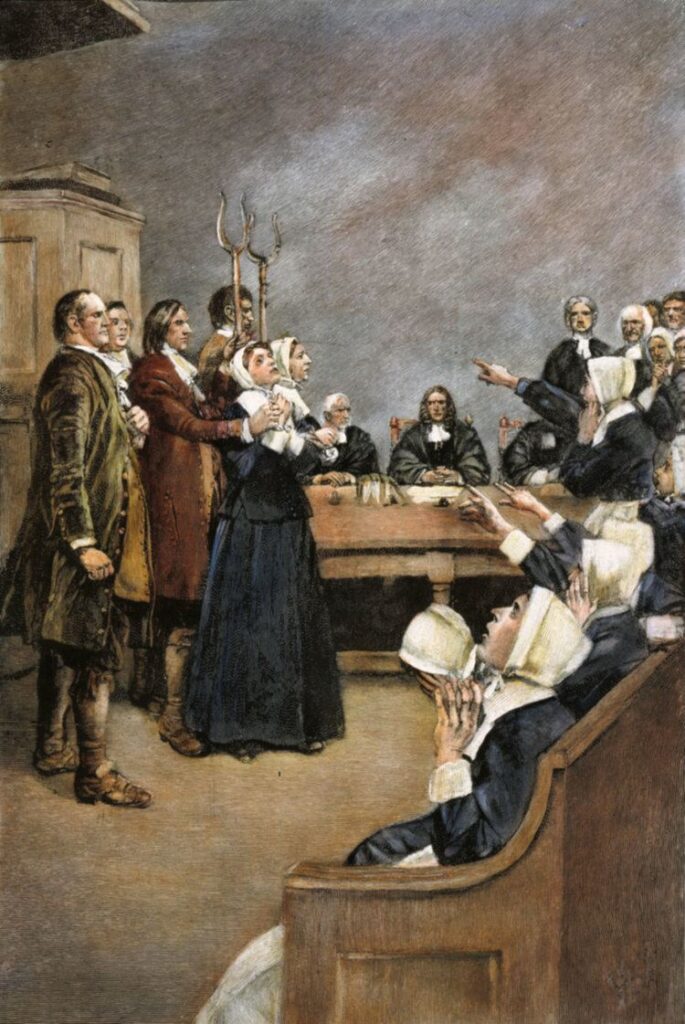Alice Parker was one of the victims who were accused and executed on September 22, 1692, at the last execution of the Salem Witch Trials.
She was accused of witchcraft by Mary Warren and named alongside Ann Pudeator.
She would not be exonerated until October 31, 2001.
Jump to:
Family Life
The Parker family of Massachusetts Bay Colony is one of the more well-known and most populous surnames. There are many Parkers who lived around the area at the time of the Salem Witch Trials, so it can be confusing as to which line Alice falls into. There is a possibility that she was a daughter/stepdaughter to Giles Corey, who had a son named John Parker. However, this is disputed by many who believe that her husband was a different John Parker.
What is known about Alice Parker's husband is that he was a fisherman, and his name was John Parker. This is not to be confused with Captain John Parker, who appeared 80 years later during the Battles of Lexington and Concord during the American Revolution. There were many Parker families, and most had a son named John.
Trial and Execution
Alice Parker's name was mentioned by Mary Warren, who said she had been a witch for 12 years or more. On that same day that Alice was accused, she was arrested.

During her examination, the magistrates questioned her on the accusations of Warren. The History of Massachusetts Blog has this recording of the exchange:
“Q: Mary Warren charges you with several acts of witchcraft. What say you to it guilty or not?
A: I am not guilty.
Q: You told her this day you cast away Thomas Westgate.
A: I know nothing of it.
Q: You told her John Lapthorn was lost in [illegible]
A: I never spoke a word to her in my life.
Q: You told her also you bewitched her sister because her father would not mow your grass.
A: I never saw her.”
Alice Parker was adamant that she did not even know Mary Warren.
Other accusers then stepped forward to accuse Alice of being a witch. This included Margaret Jacobs, Marshall Herrick, Thomas Putnam, and others. The accusations would not stand in court today because much of it was based on spectral evidence and, therefore, not even effectively cross-examined.
The most absurd of the accusations that were allowed to stand was that of John Westgate.
Westgate testified of a confrontation that Alice Parker had with her husband that took place while he and John Parker were at Beadle's Tavern drinking. When Westgate spoke to Alice, she said back to him that it was none of his business. He then testified that on his way home after drinking, he was followed by a black pig and was frightened, which caused him to call and accidentally stabbed himself.
John Westgate's testimony was eight years old and occurred after he had been drinking. It was permitted to be evidence.
Alice Parker was sentenced to be executed by hanging on September 22, 1692. While en route to the gallows, the cart carrying those who would be hanged became stuck. The afflicted girls then screeched with terror and began to claim that they could see the devil trying to stop the carriage.
The eight would be put on the gallows, and all would maintain their innocence until their death. This would be the last of the executions of the Salem Witch Trials as many began to question whether or not the girls were telling the truth.
Seven others were put to death:
- Martha Corey (September 22, 1692; wife of Giles Corey)
- Mary Easty (September 22, 1692)
- Mary Parker (September 22, 1692)
- Ann Pudeator (September 22, 1692)
- Wilmot Redd (September 22, 1692)
- Margaret Scott (September 22, 1692)
- Samuel Wardwell Sr. (September 22, 1692)

